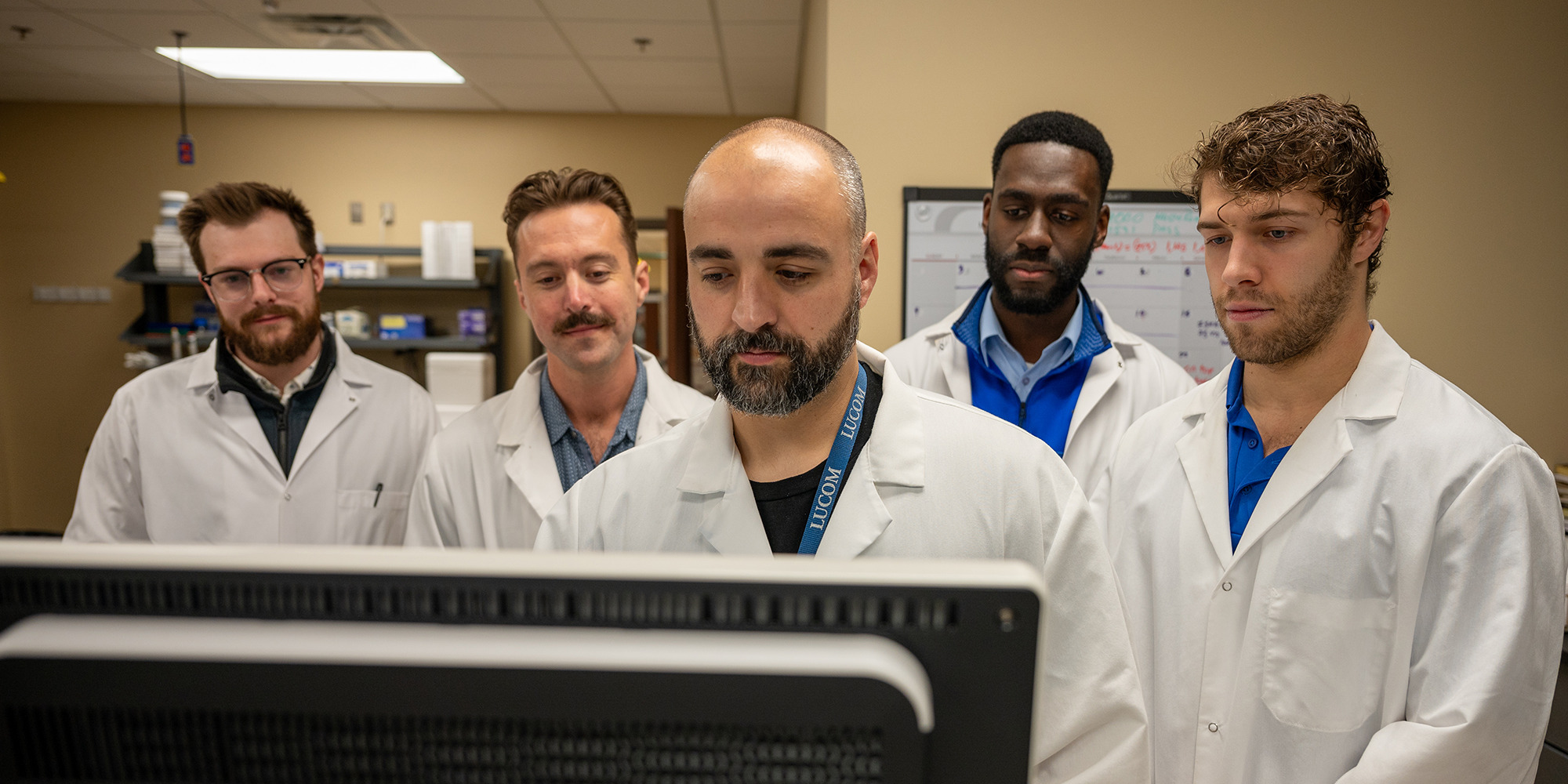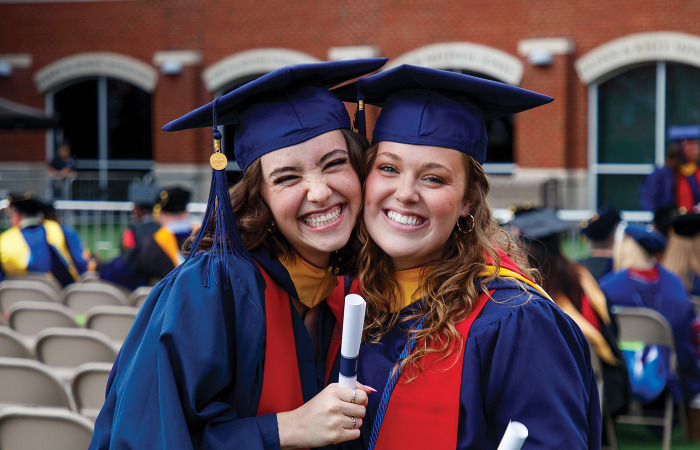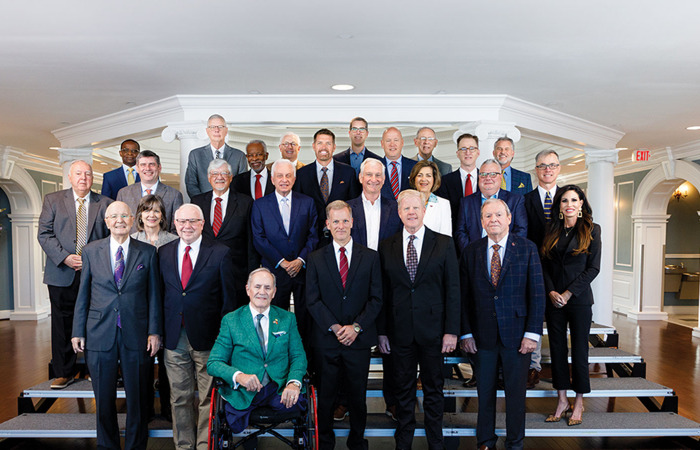LUCOM
Several students from Liberty University College of Osteopathic Medicine presented research at national conferences this past academic year, where they connected with healthcare professionals.
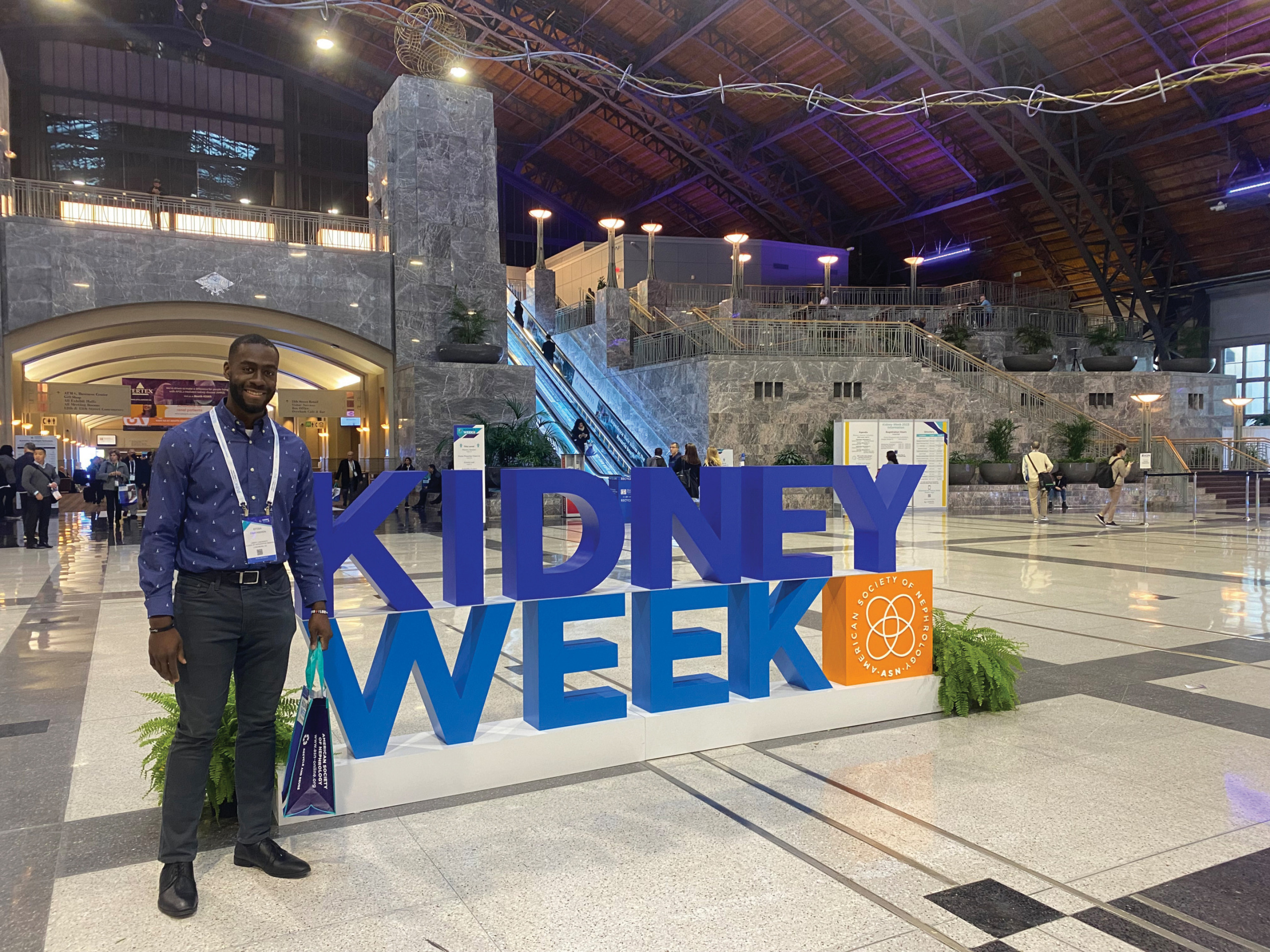
Efosa Osayamwen, a senior studying biomedical sciences doing research under Dr. Joseph Gigliotti at LUCOM, presented research at a meeting of the American Society of Nephrology in Philadelphia.
Events included the American Heart Association’s Hypertension Scientific Sessions conference in Boston, the AHA’s Epidemiology and Prevention: Lifestyle and Cardiometabolic Health conference in Chicago, a meeting of the American Society of Nephrology in Philadelphia; the annual Mayo Clinic Wound Symposium in Rochester, Minn.; American Academy of Osteopathy Convocation in Colorado Springs, Colo.; and the International Fungal Genetics Annual Conference in Pacific Grove, Calif.
Some of the work comes out of the summer research elective, where students are paired with faculty who conduct ongoing research in medicine and biomedical sciences.
“It’s important that there is research happening at LUCOM that is being presented and published in the larger arena,” said Dr. Joseph Gigliotti, director of research and special projects. “For medical students, that’s really key. When it comes to getting residency spots, their eventual practices, and other steps in their medical careers, research plays a pivotal role.”
LUCOM
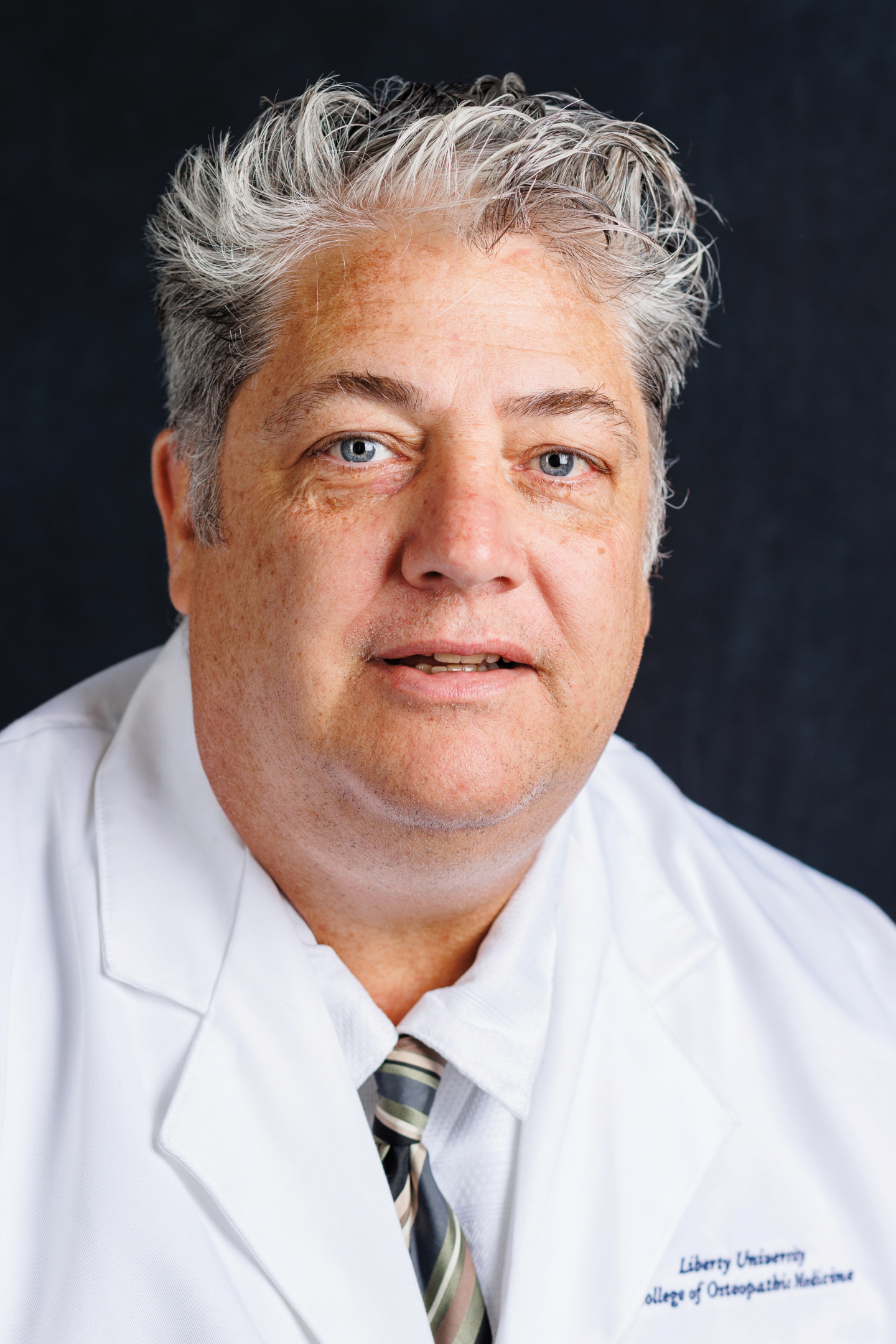
LUCOM Professor of Immunology Dr. Christopher L. Kepley
Dr. Christopher L. Kepley, professor of immunology at LUCOM, was awarded a three-year, $500,000 R15 grant from the National Cancer Institute in September and is working with Liberty students of all levels on a new approach for targeting and killing cancer cells. This is the first time that Liberty has received a grant from the NCI and marks Kepley’s second R15 grant to focus on cancer immunotherapy. Earlier this year, he received a separate $74,000 grant over 12 months from the Virginia Innovation Partnership Corporation for the development of an alternative bait for crustacean fishermen using molecules found emanating from rotting flesh.
Biology & Chemistry
Professor of Biology Dr. Kyle Harris aided in research that designates and further defines newly discovered snake species in parts of Central and South America: the Tudor’s Coffee Snake (Ninia guytudori) and the venomous Eyelash Pitviper (pictured here), of which Harris helped to classify two of six variations. The findings were published in “Evolutionary Systematics,” an international, peer-reviewed, life science journal devoted to whole-organism biology. His work was done in partnership with the Khamai Foundation, an Ecuadorian biodiversity protection organization. Harris and members of Khamai traveled to Panama in Fall 2022 and Colombia in Spring 2023 to look for the snakes.
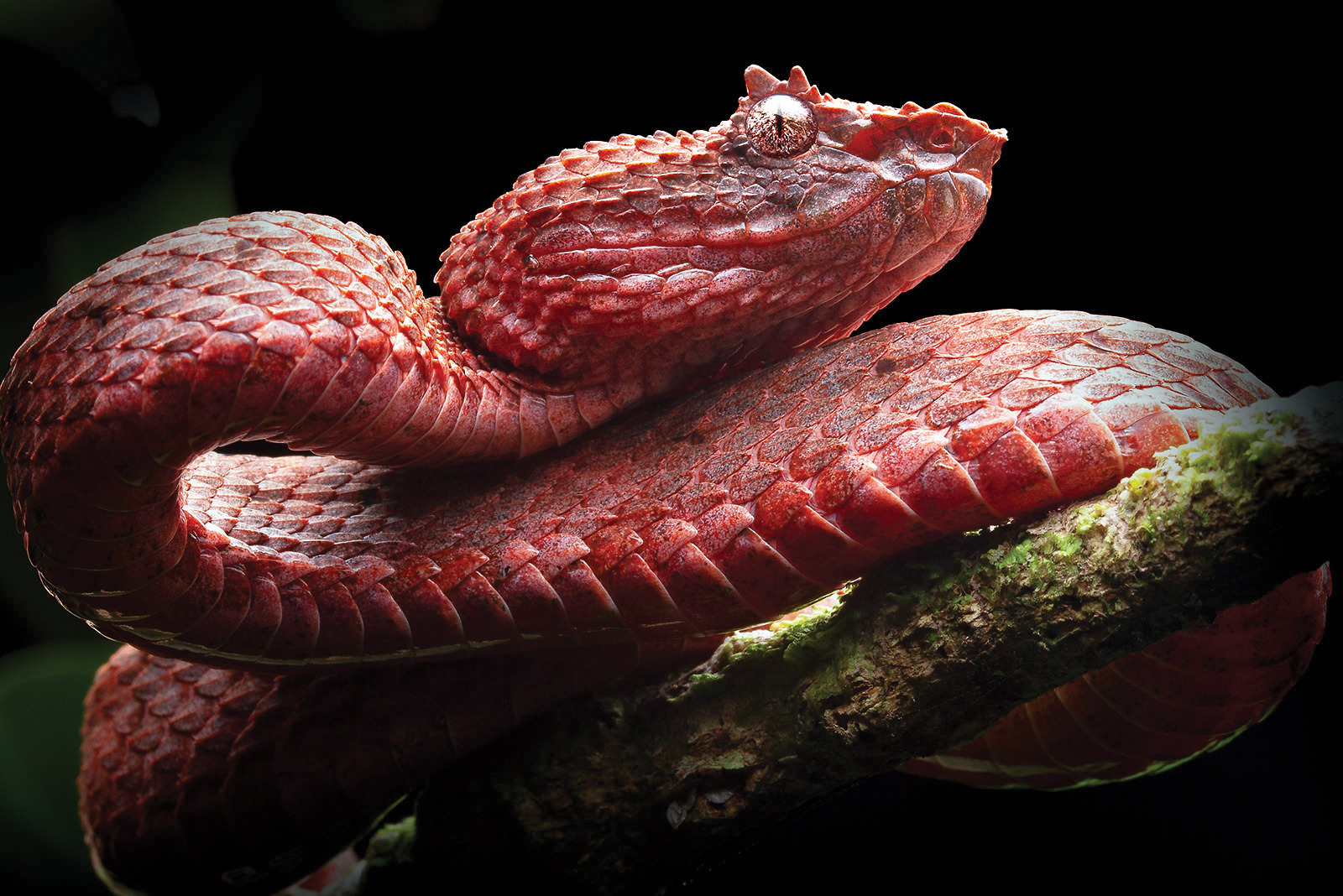
An eyelash pitviper
Native to the cloud forests of northwestern Ecuador, the Tudor’s Coffee Snake reaches about 1 foot in length and has a uniformly black coloring with a white collar. It is named in recognition of Guy Tudor, a naturalist and scientific illustrator who had a deep fondness for all animals and made an impact on the conservation of South America’s birds.
Eyelash pitvipers are defined primarily by their enlarged, spiky scales above their eyes that resemble eyelashes. They are also known to be polychromatic, meaning they have notable variations in color despite being the same species, and these variations can be seen in close proximity to each other.
Aeronautics
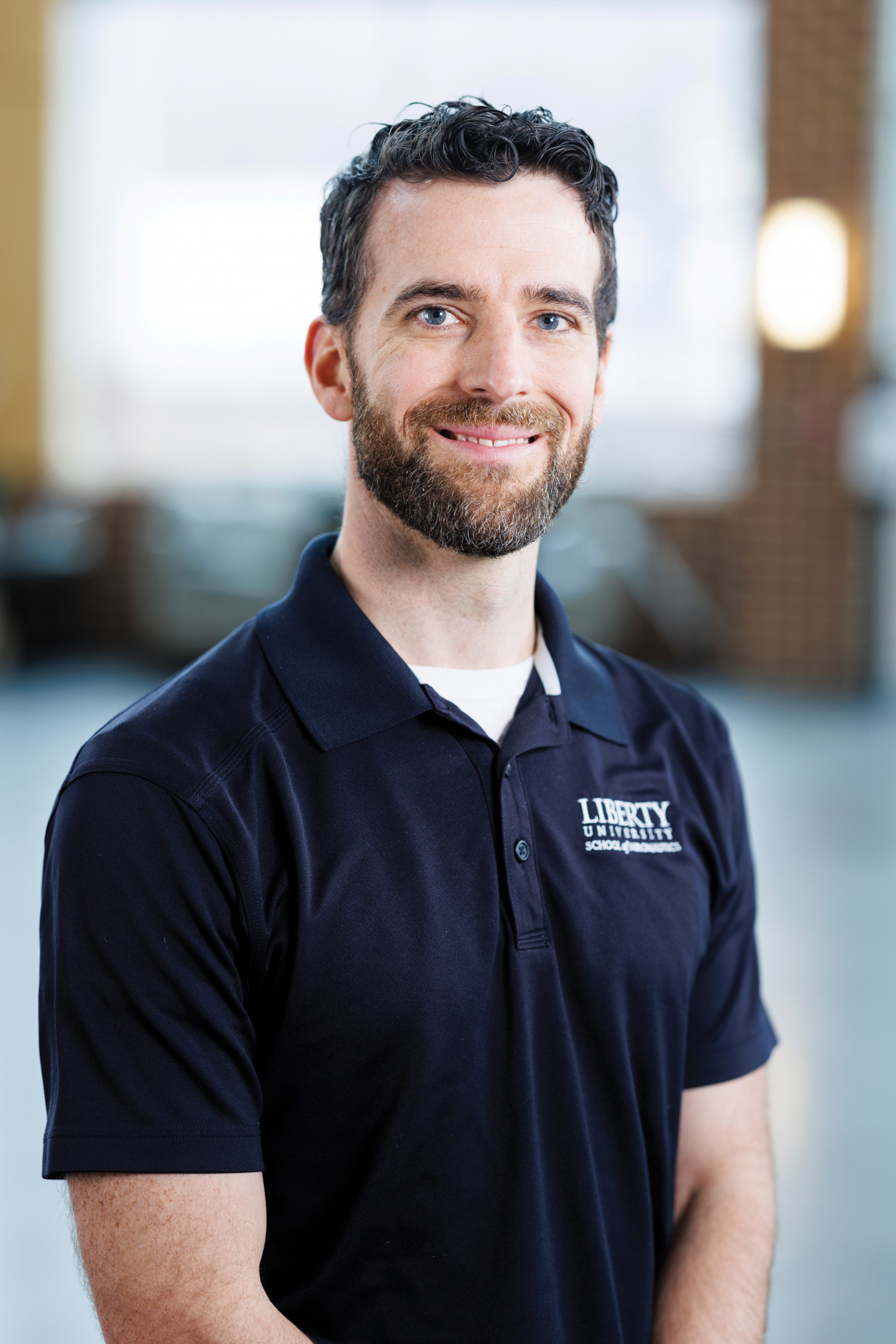
School of Aeronautics Director of Safety Andrew Walton
Andrew Walton, director of safety at the School of Aeronautics, and Joshua Cardoza (’23) partnered with the Aircraft Owners and Pilots Association (AOPA) Air Safety Institute to release an updated Fatal Flight Training Accident Report: 2000-2019. They analyzed fatal instructional accidents in piston engine airplanes throughout the United States and did a split-decade analysis, from 2000-09 and 2010-19, categorizing incidents that occurred either during solo flights or with an instructor on board and according to the primary cause. The comparison showed the effects of new technologies and improved safety measures, as well as advanced education and simulator-based training in reducing the accident rate.
From 2000 to 2004, the fatal accident rate averaged 0.49 per hundred thousand training hours flown, and the rate has steadily dropped to an average of 0.26 in the last five years of the study.

Joshua Cardoza (’23)
“The good news is that flight training is getting safer,” Walton said. “Sustained efforts by the FAA, NTSB, manufacturers, and the flight training community have resulted in a fatal accident rate that is now roughly half of what it was at the start of the century.”
The report concludes that loss of control comprises the largest accident category, accounting for 54 percent of all fatal instructional accidents with the vast majority being stall/spin related. Midair collisions and controlled flight into terrain, were the second- and third-leading causes of fatal crashes, respectively.
